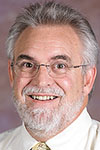Jeb Bladine: Transparency lacking in rec center planning
Imagine overlaying the adjacent photo with new McMinnville community and aquatic centers overlooking the Yamhill River, connected at the hip to sprawling Joe Dancer Park in the background.
A citizen advisory group couldn’t see it last year. However, they weren’t really looking.
MacPac was still conceptualizing civic facility needs in late 2020 when city of McMinnville and Linfield University officials stepped in with a surprise siting and partnership proposal. It was a plan devised earlier in 2020, outside a public view already made difficult by the pandemic.
The idea was to share facility costs and usage on parts of 80 acres owned by Linfield in McMinnville’s far southeast corner. MacPac paused only briefly to consider instead the possible use of Wortman Park, already home to McMinnville Senior Center, then voted overwhelmingly for the Linfield site.
There were some clear gaps in available information: No inkling of how costs and facilities would be shared by institutions with different agendas and client bases; no appraisal of land that may include some of McMinnville’s most valuable commercial property; a decision driven primarily by the desire for an Olympic-size pool allegedly made affordable through cost/program sharing, but without further details.
Swim club enthusiasts envision major events drawing visitors to McMinnville, and say city and Linfield aquatic programs could function without overlap. Others await more concrete analysis of programming, and wonder if other civic interests should be re-visited in the post-pandemic light.
Limited site investigation
Planning Director Heather Richards was tasked with analyzing possible development sites, perhaps hampered by a pre-set city agenda. When asked in February about the 27.4-acre Riverside Drive site, she said it was unavailable because its owner — McMinnville Water & Light — was master planning it for future economic development.
That wasn’t the case, as was confirmed by W&L Manager John Dietz:
“If a project comes along that the W&L Commission believes will add value to the community, they will make a decision at that time,” Dietz said. “The commission has and continues to have a long-term vision on how Water & Light can continue to provide the greatest value to our community. We have done no master planning for that parcel.”
Richards also said the Riverside Drive site had shortcomings related to location, access by alternative transportation modes, adjacency to residential neighborhoods, adjacency to K-12 schools, and adjacency to a highway or arterial.
Given the opportunity, however, MacPac might have considered that the Riverside site already is owned by local citizens; that its Dancer Park connection could make it hugely convenient for city services; and that it is closer to downtown, closer to middle and high schools, and easily reached by transportation from the nearby Lafayette Avenue arterial.
Perhaps the proposed Linfield site is part of a greater long-term vision to combine even more civic recreation and cultural facilities; perhaps a to-be-determined plan of financing and operations will persuade taxpayers to support the Linfield partnership idea; perhaps the alternative development sites have flaws that make the southeast property a more attractive choice.
MacPac and city officials, however, have followed a process that so far has lacked the level of transparency and full disclosure that voters ultimately need to make multi-multi-million-dollar decisions. There’s still time to remedy that situation with a post-pandemic review of all the alternatives.
Jeb Bladine can be reached at jbladine@newsregister.com or 503-687-1223.









Comments
PAO
It may be time for planning to provide real information. During the UGB remand process, planning argued in favor of pulling active farmland south of Redhill Road into the UGB. Most of the justification was an engineering study, commissioned by planning, that showed getting utilities to that area wouldn't be "too expensive." Two alternative areas, Bunn Village and Brentano Lane, were eliminated because the the cost of getting city utilities to those areas would be cost prohibitive. No study was commissioned to support that assumption.
I own property on Brentano and would prefer to stay out of the UGB, but in the interest of accuracy I have to point out that we do, in fact, have electricity to Brentano. We also happen to have a MW&L water main running down Brentano with several residences on city water and other of us on private wells.
Another reason the Redhill farmland was attractive to planning was that it was in the path of getting utilities to other buildable land and the farmland "needed" to be in the UGB to run the utilities. I know Brentano is not in the UGB, nor is farmland to the west, and yet both areas have buried utility infrastructure. "Easement" may have been more acceptable to the Redhill farmer than "UGB inclusion," but I saw no mention of that as an option in the 700+ pages of documentation I read.
People, both volunteers and elected officials, are not getting accurate, timely information and yet they are being pushed into making decisions driven by artificial deadlines. It makes me wonder if the goal is growing a town we want to live in or simply building a resume.
McMinnville Planning Department
Hi, this is Heather Richards and I wanted to provide some context. I was asked to review 10 acre sites within the City's UGB that I knew of that would be available for the potential Recreation Center project, and provide that presentation to the MAC PAC committee. The committee had developed their own locational criteria and I evaluated the sites based on that criteria. My evaluation included a site that MW&L owns as they had told me they would be willing to surplus that site. It did not include the site that Jeb Bladine is referencing in his editorial because I thought it was not available for other uses due to some conversations that I had had with John Dietz when I brought him some private interests in that property. If I misunderstood John Dietz that is on me and not the committee or any other city staff. If MW&L is willing to leverage that site for a future Rec Center it probably should be officially evaluated. Based on some of the committee's criteria for locational siting I did not think that it would score well and shared that with Jeb. In my opinion, compared to some other sites under review it would not score as well as them due to the fact that it was not centrally located in McMinnville especially with the planned future growth in the SW; it was not on an existing transit route or an existing bike/ped path network; it was not adjacent to McMinnville’s residential neighborhoods; it was not adjacent to K-12 schools; or adjacent to a highway or arterial street. However, please keep in mind it has not yet been officially evaluated, and that was just my quick assessment based on an email conversation with Jeb. There are no hidden agendas here. The MAC PAC committee is comprised of a group of community volunteers investing their time to improve our community’s recreation facilities. Everyone is working with the same goal of doing the best that they can because they want to serve the community they live in and love.